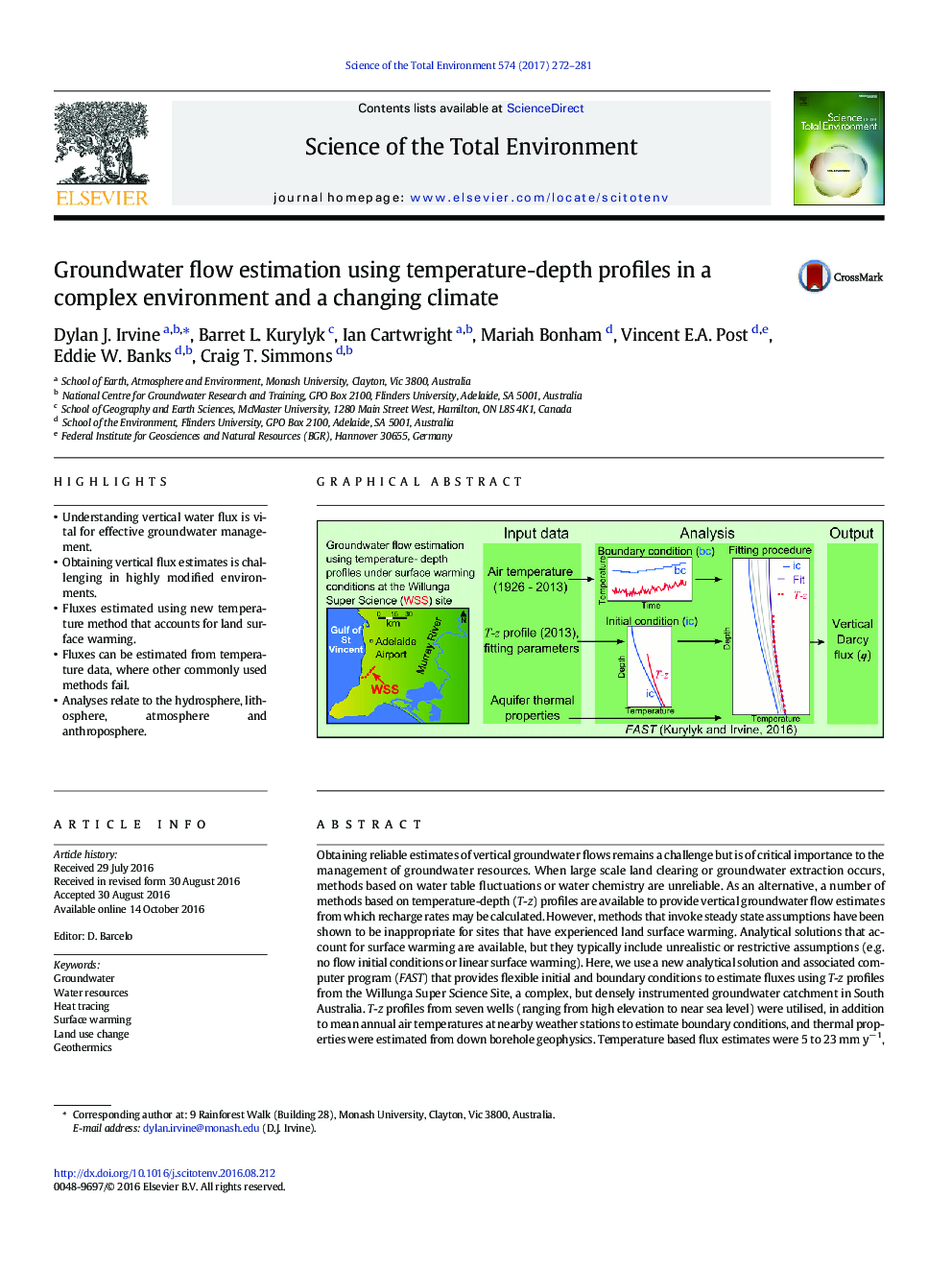| کد مقاله | کد نشریه | سال انتشار | مقاله انگلیسی | نسخه تمام متن |
|---|---|---|---|---|
| 6320247 | 1619717 | 2017 | 10 صفحه PDF | دانلود رایگان |
- Understanding vertical water flux is vital for effective groundwater management.
- Obtaining vertical flux estimates is challenging in highly modified environments.
- Fluxes estimated using new temperature method that accounts for land surface warming.
- Fluxes can be estimated from temperature data, where other commonly used methods fail.
- Analyses relate to the hydrosphere, lithosphere, atmosphere and anthroposphere.
Obtaining reliable estimates of vertical groundwater flows remains a challenge but is of critical importance to the management of groundwater resources. When large scale land clearing or groundwater extraction occurs, methods based on water table fluctuations or water chemistry are unreliable. As an alternative, a number of methods based on temperature-depth (T-z) profiles are available to provide vertical groundwater flow estimates from which recharge rates may be calculated. However, methods that invoke steady state assumptions have been shown to be inappropriate for sites that have experienced land surface warming. Analytical solutions that account for surface warming are available, but they typically include unrealistic or restrictive assumptions (e.g. no flow initial conditions or linear surface warming). Here, we use a new analytical solution and associated computer program (FAST) that provides flexible initial and boundary conditions to estimate fluxes using T-z profiles from the Willunga Super Science Site, a complex, but densely instrumented groundwater catchment in South Australia. T-z profiles from seven wells (ranging from high elevation to near sea level) were utilised, in addition to mean annual air temperatures at nearby weather stations to estimate boundary conditions, and thermal properties were estimated from down borehole geophysics. Temperature based flux estimates were 5 to 23 mm yâ 1, which are similar to those estimated using chloride mass balance. This study illustrates that T-z profiles can be studied to estimate recharge in environments where more commonly applied methods fail.
411
Journal: Science of The Total Environment - Volume 574, 1 January 2017, Pages 272-281
